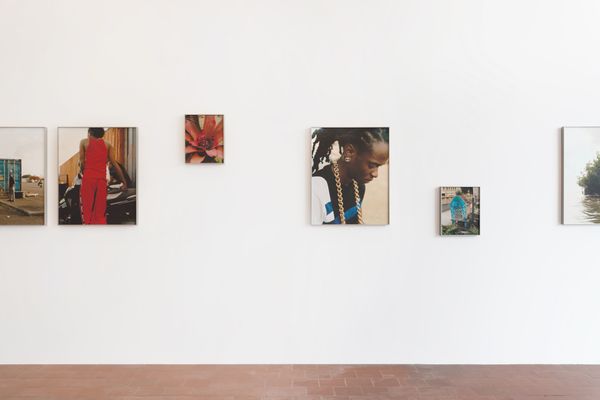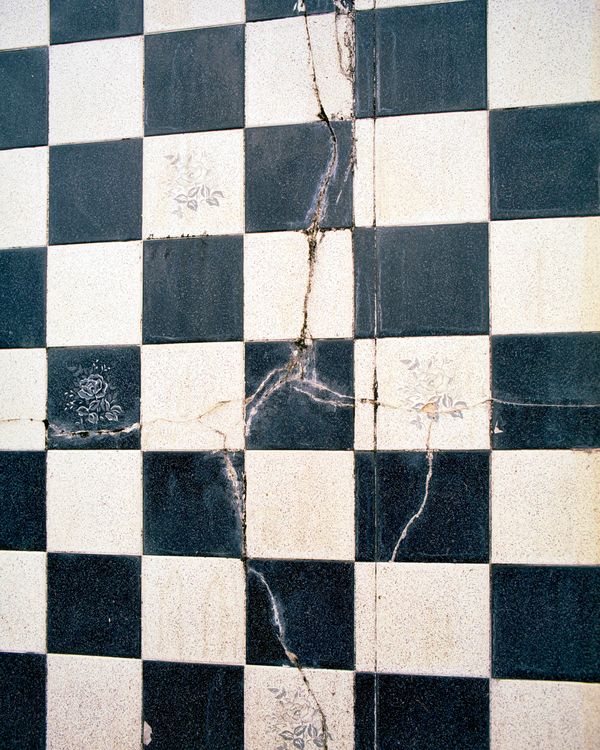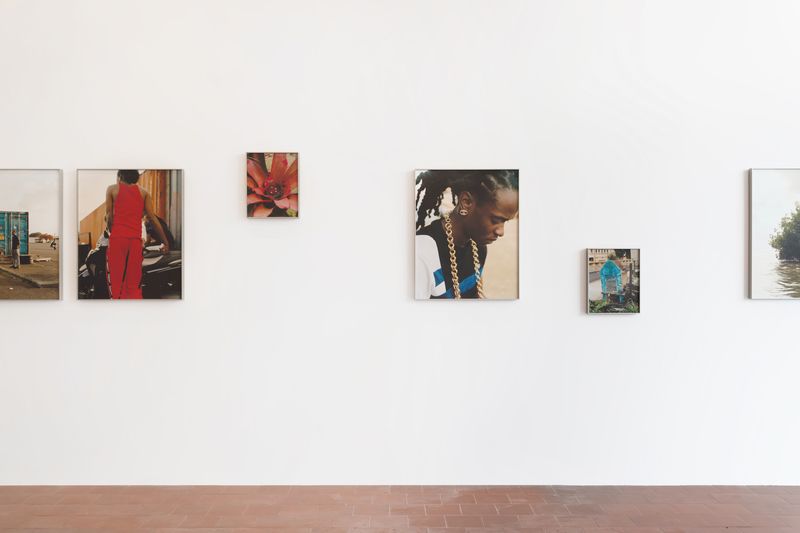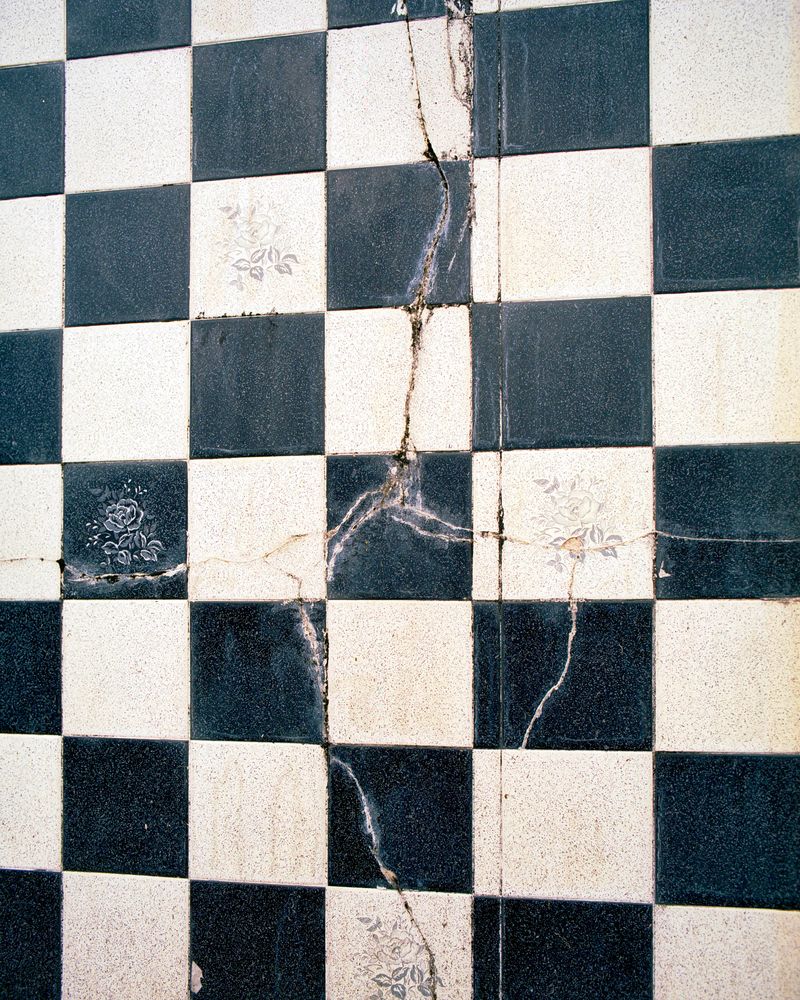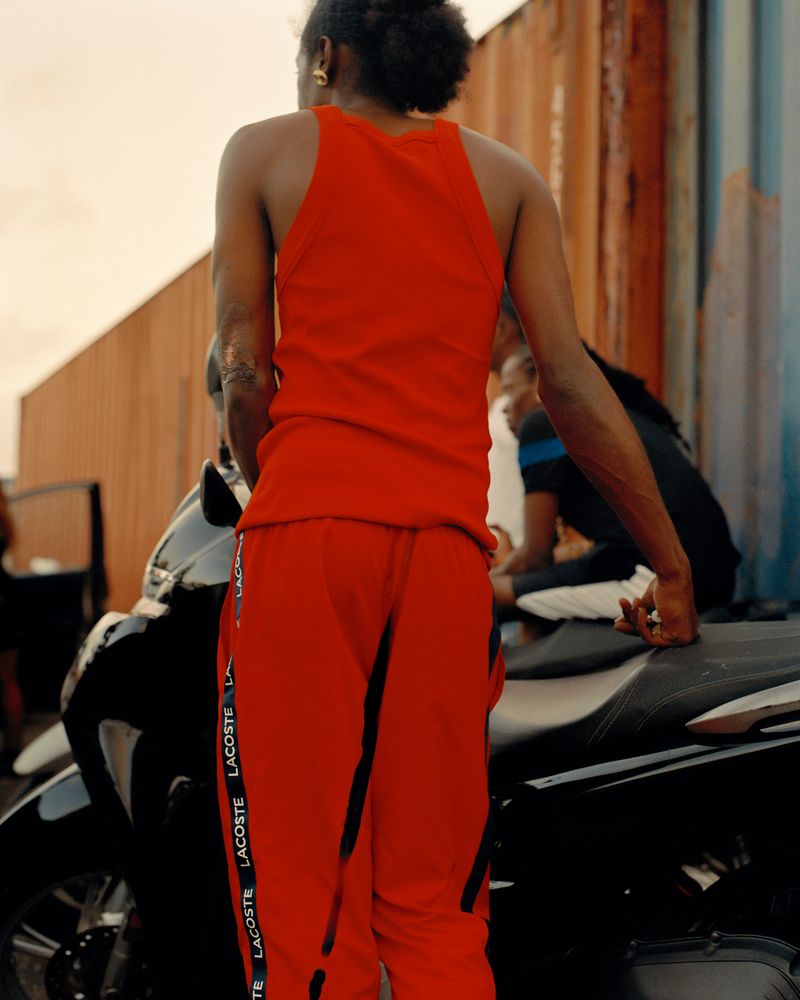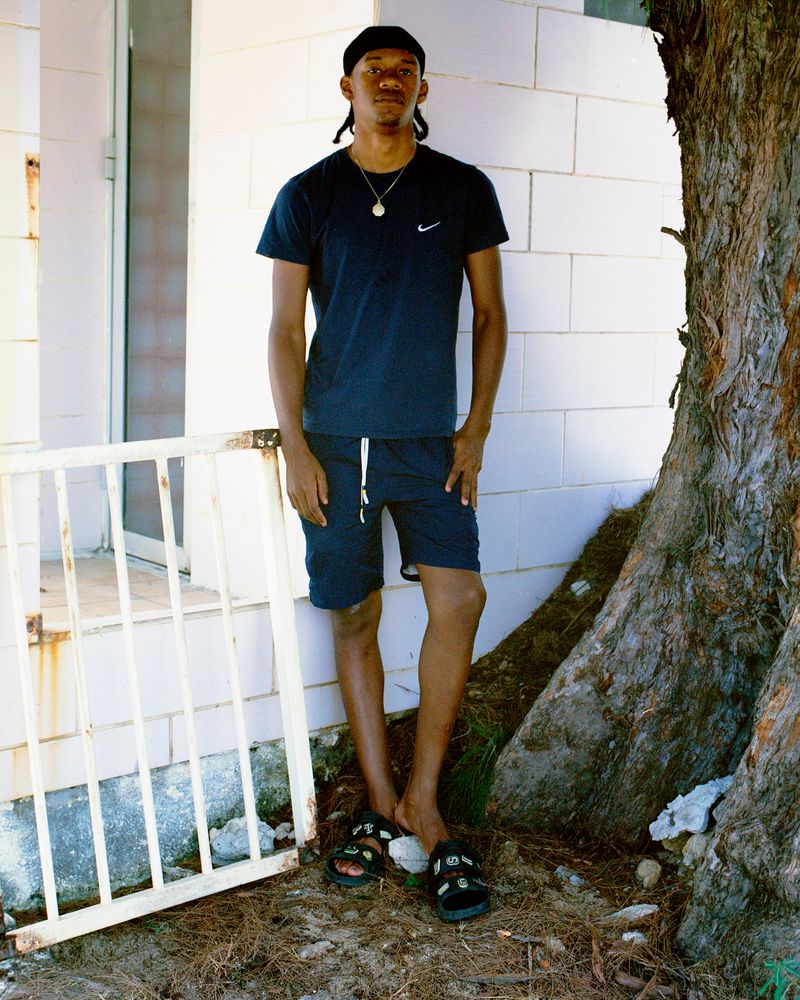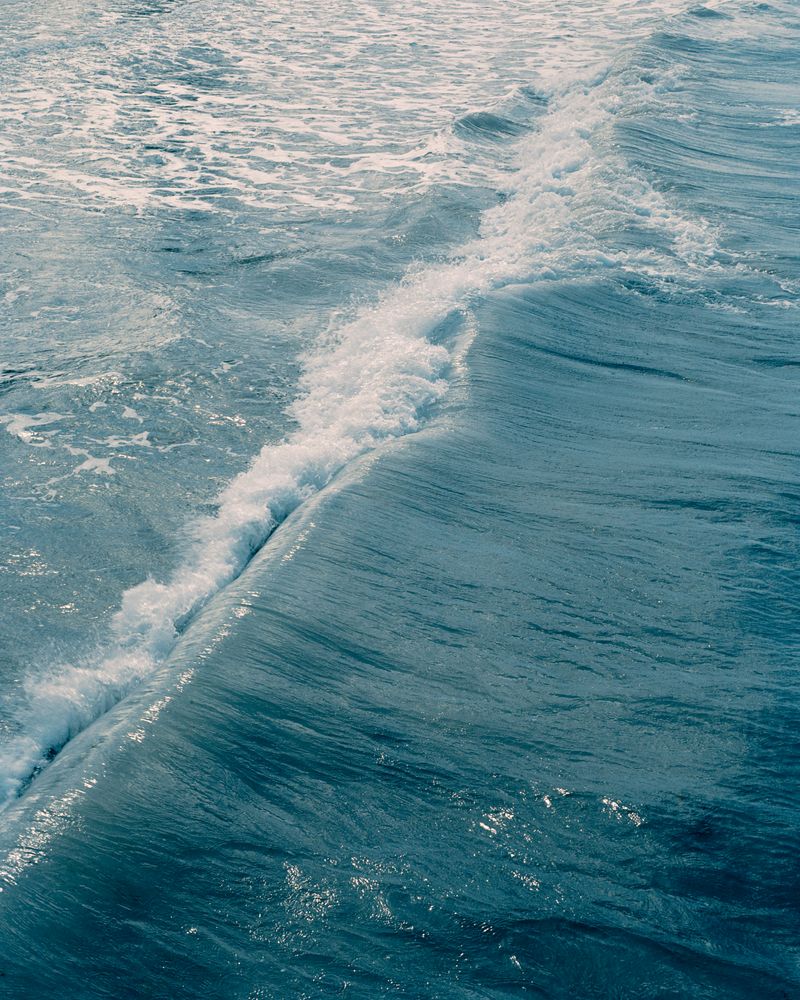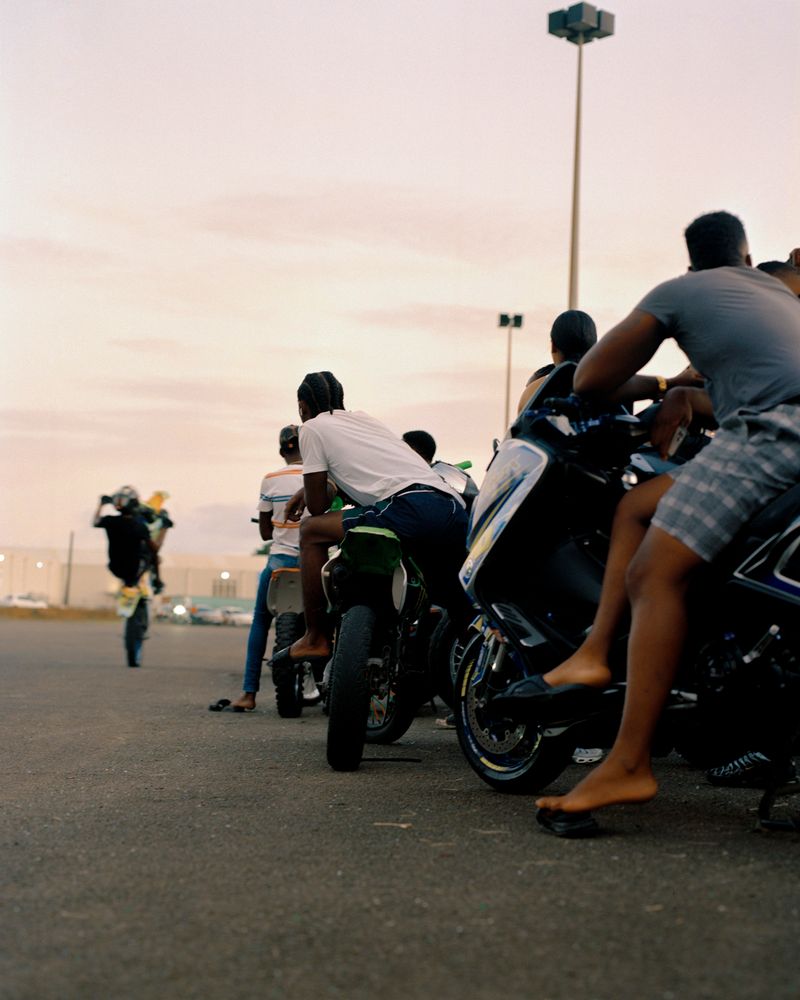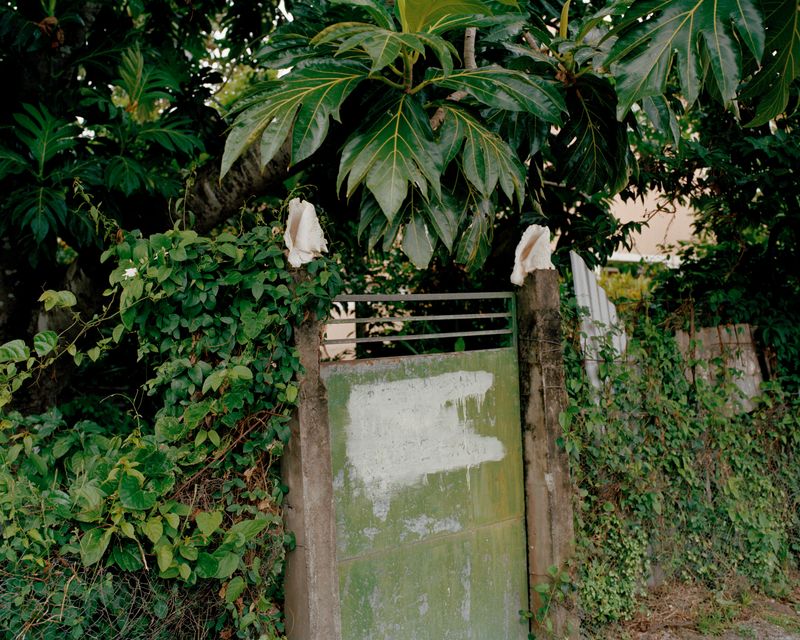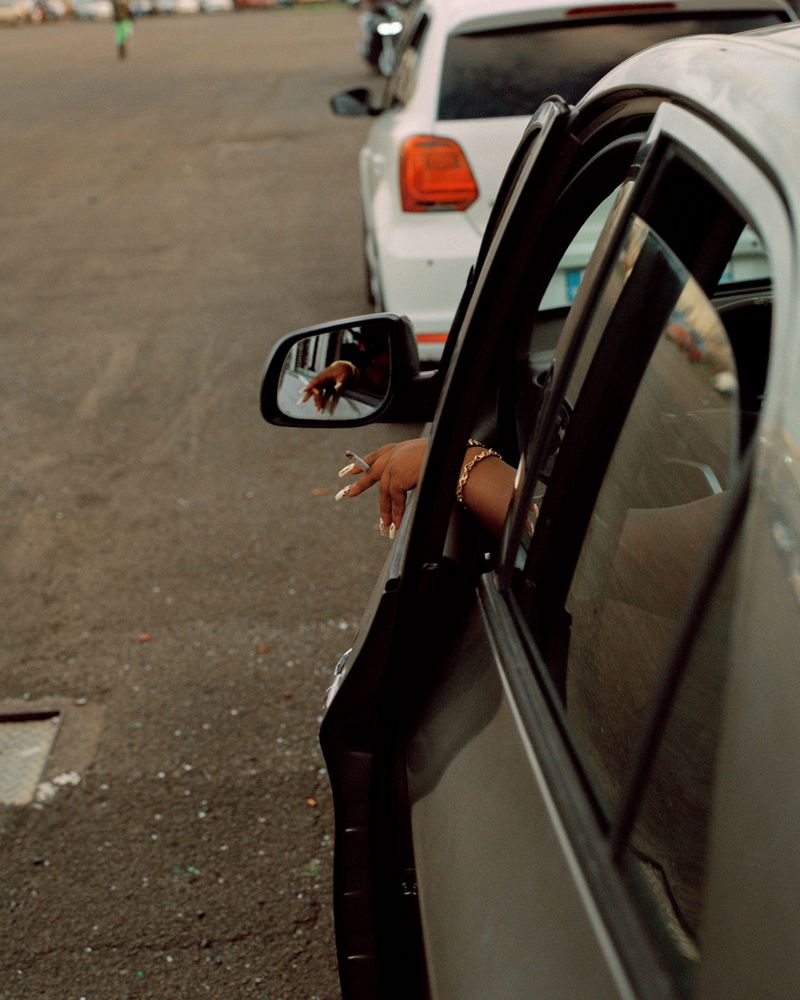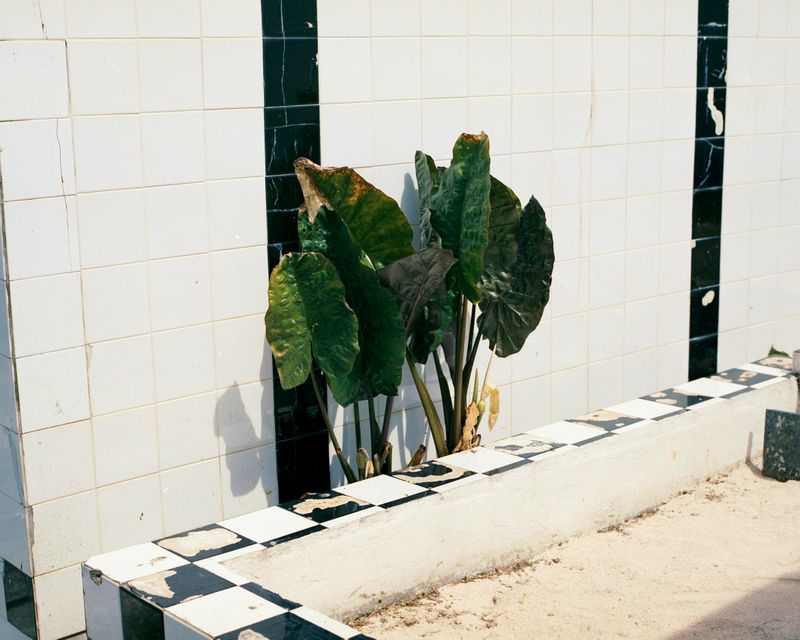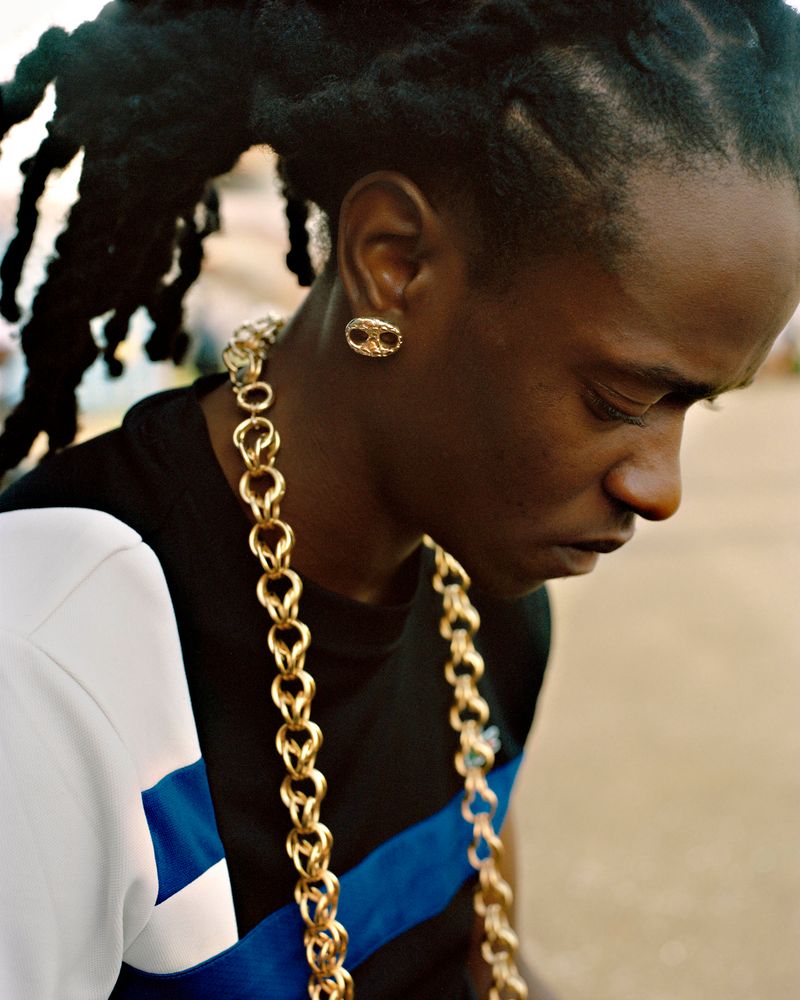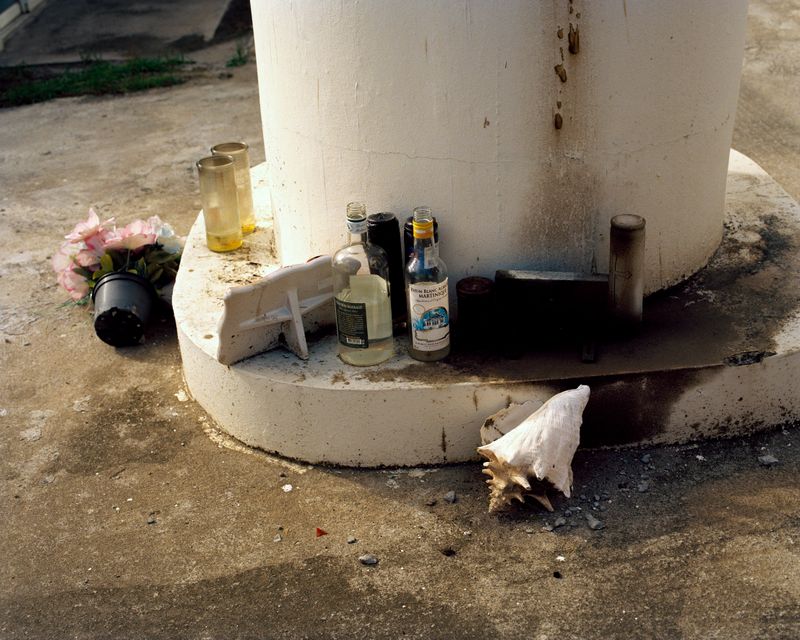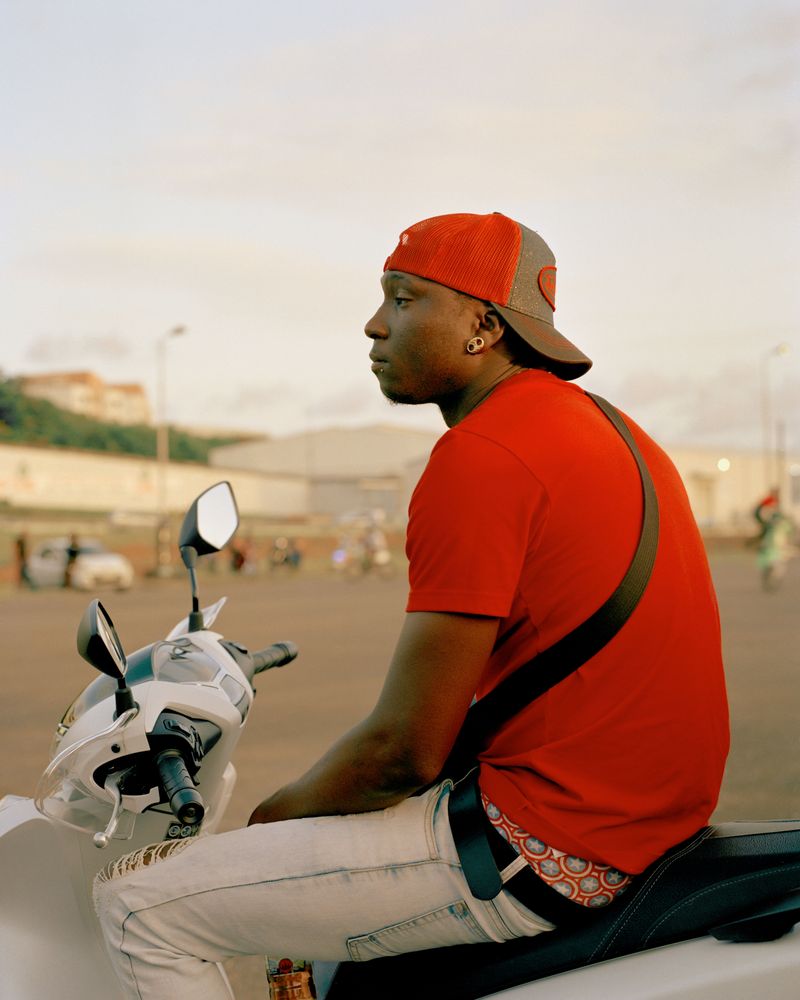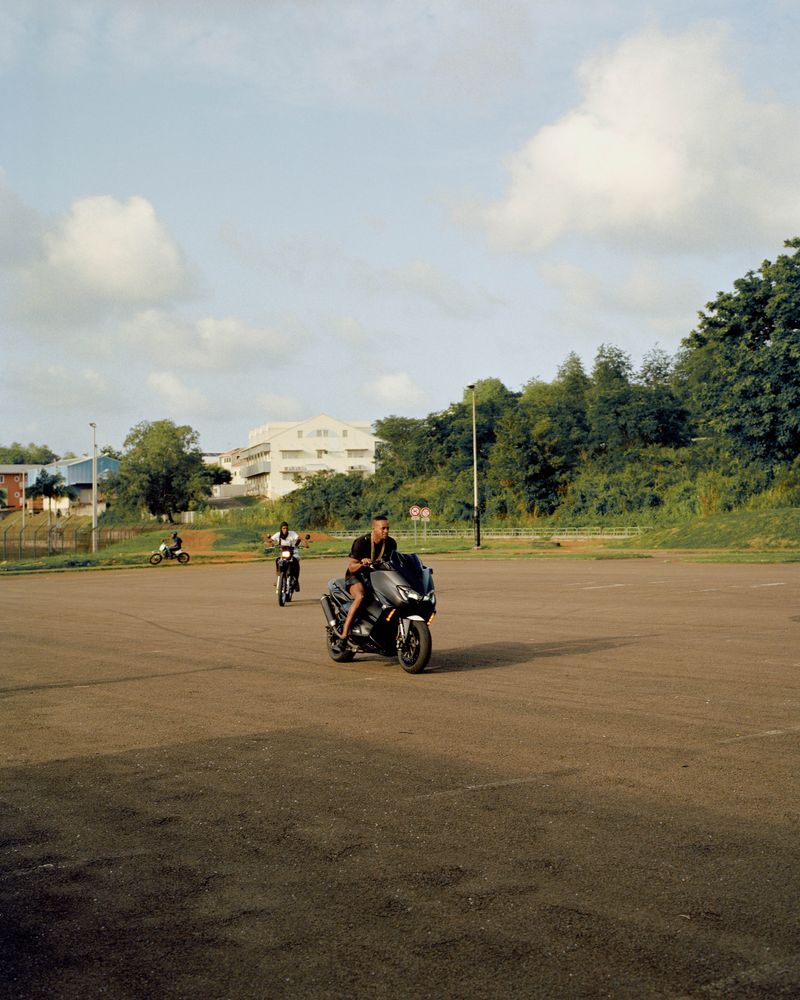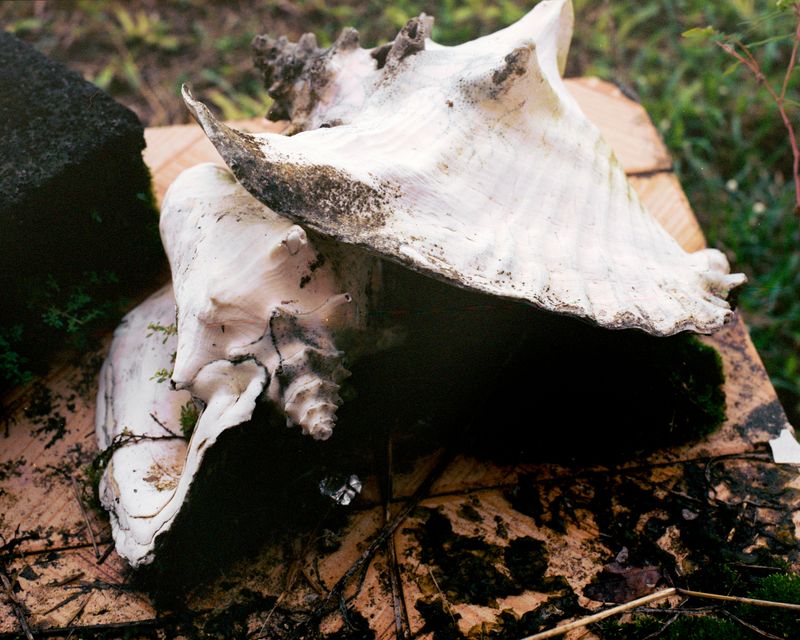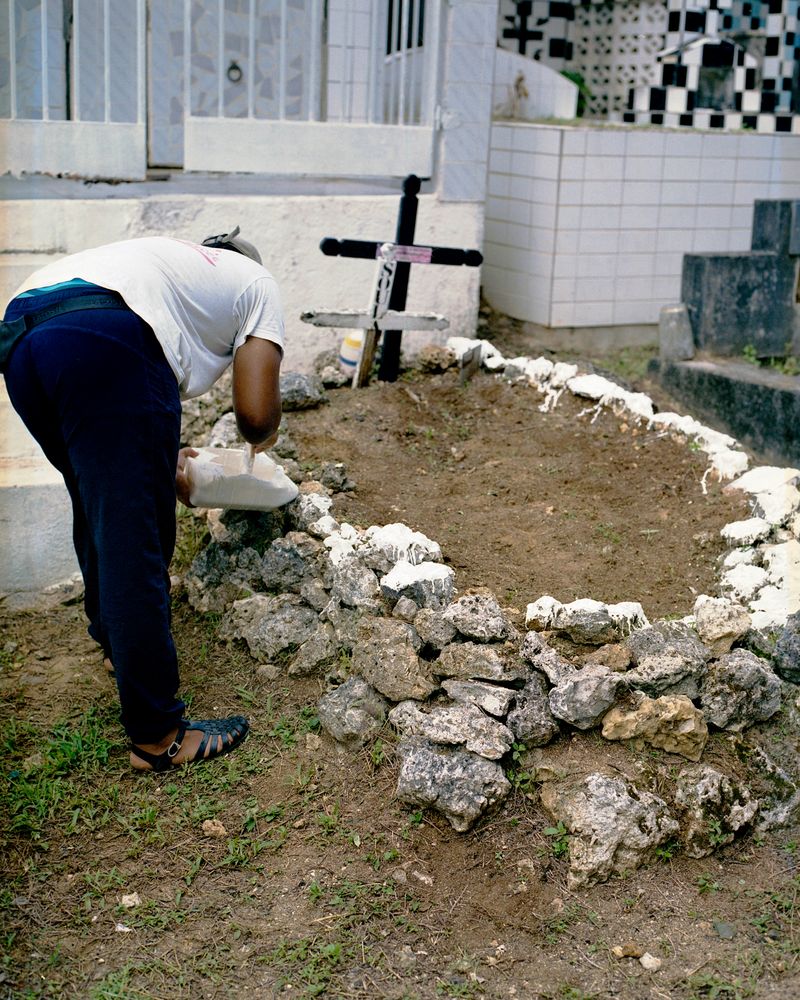Les Mornes, le feu (The Dunes, the Fire)
-
Dates2022 - 2025
-
Author
- Locations Guadeloupe, Martinique
-
Recognition
Les Mornes, le Feu is a series born out of my fascination for Caribbean urban culture and esotericism. It explores the spaces where this culture is hybridized, transformed and invested on a daily basis.
«Les Mornes, le feu» is a long term project that focuses on urban culture and youth in the French oversea islands of Guadeloupe and Martinique. Overseas are spaces of hybridity : neither really French nor completely independent from French culture and history, they are territories deeply anchored in and worked by histories, pasts and contemporaries. In those spaces historically constructed through exotic stereotypes, Les Mornes, le feu seeks a different narrative. Anchored in the postcolonial city and and its youth, it proposes a vibrant exploration of a generation redefining our understanding of French-Caribbean identities today.
I develop an artistic practice that lies at the intersection of documentary and poetic investigation. Contrary to the typical representations of the Caribbean as deserted beaches and lush exotic nature, my focus is on urban practices and the forms of resistance they generate. Drawing on the idea of associative language, central to the rhizomatic thinking of Caribbean poet and philosopher Édouard Glissant, I explore the complex dimensions of contemporary Caribbeanness. By constructing a poetics of the Black body that puts the complexity of the urban landscape in dialogue with the youth represented within it, my work moves beyond the notions of islands or singular identities to consider sites of encounter, collision, and entanglement.
Through my photographs, I craft a magico-urban aesthetic, a visual and poetic language born from the collision of mystical heritages, postcolonial memory, and globalized urban cultures. By centering the perspective of a generation in search of renewed narratives and new modes of belonging, I explore how young people relate to the visible and invisible layers of the world they inhabit. Details of bodies and objects become artefacts charged with symbolic meaning. The environment, whether concrete or overgrown, abandoned or overflowing, serves as both backdrop and protagonist. In this world inhabited by signs and echoes, youth constructs shifting identities: sometimes painful, always inventive.
Following a group of mostly young men through their practice of «cabrage», or «rodeo» between Guadeloupe and Fort-de-France, I try to offer a contemporary perspective on both land and bodies. The parking lot of Aliker Stadium becomes a refuge where young people find a way to assert themselves, create and connect through a practice that is not only physical but also spiritual. Anchored in the postcolonial city, the landscapes that unfold evoke an environment that is both mythical and mystical. Nature, in cohabitation with the urban, is shaped by it and adorned with objects charged with symbolism and ritual force. These elements suggest a deep connection between the material and spiritual worlds, reinforcing the mystical aspect of the shared experience.
Beyond the historical legacy of slavery, these young people are reclaiming the richness of a local hybrid, ever-evolving culture, drawing on French roots, ties to neighboring English-speaking islands, and cultural influences from the United States. They weave a unique narrative, where the diversity of identities blends harmoniously into a quest for personal and collective expression. Offering alternative representations of caribbeaness and tender portraits of black masculinity, the series explores contemporary issues and debates in documentary photography, seeking to amplify marginalized voices and disrupt dominant discourses. It invites us to question our own perceptions and recognize the diversity of stories that weave the fabric of the Caribbean, acknowledging the multiple narratives that shapes French-Caribbean identities today.
Cédrine Scheidig (born 1994, France) is a French-Caribbean photographer based in Paris. Anchored between Europe and the Americas, she grew up in the suburban outskirts of Paris, a space which is a site of social and racial struggles, but also of flourishing diasporic lives and imaginaries. Drawing from her dual heritage, she attempts to make sense of the poetics and politics of the diasporic experience, exploring black geographies in the Caribbean and the periphery/centers of colonial western empires. Unraveling the complex dimensions of caribbeanness and blackness, her photography engages with insularity, migration, urban culture, youth and the imaginaries that emerge from uprooting. At the intersection of documentary and poetic approaches, her work yields delicate portraits and urban landscapes bathed in a soft light, weaving together different historical and spatial eras into the search of what she defines as a «black sense of space». A graduate from Ecole Nationale de la Photographie d’Arles (2021), her work has been presented in several group exhibitions, including Fotografia Europea Festival (2023, Italy), Rencontres Photographiques de Guyane (2023, Guyane), Encontros da Imagem (2023, Portugal), Plat(t)form Fotomuseum Winterthur (2022, Switzerland), Dior Prize w/ LUMA Foundation (2021, Arles), Rencontres internationales de la photographie (2021, Arles) and in a debut solo exhibition at Maison Européenne de la Photographie in Paris, in February 2023.
Link to editorial and publisher dossier : https://www.swisstransfer.com/d/9171092b-3317-4a23-bb25-9081d070848c
